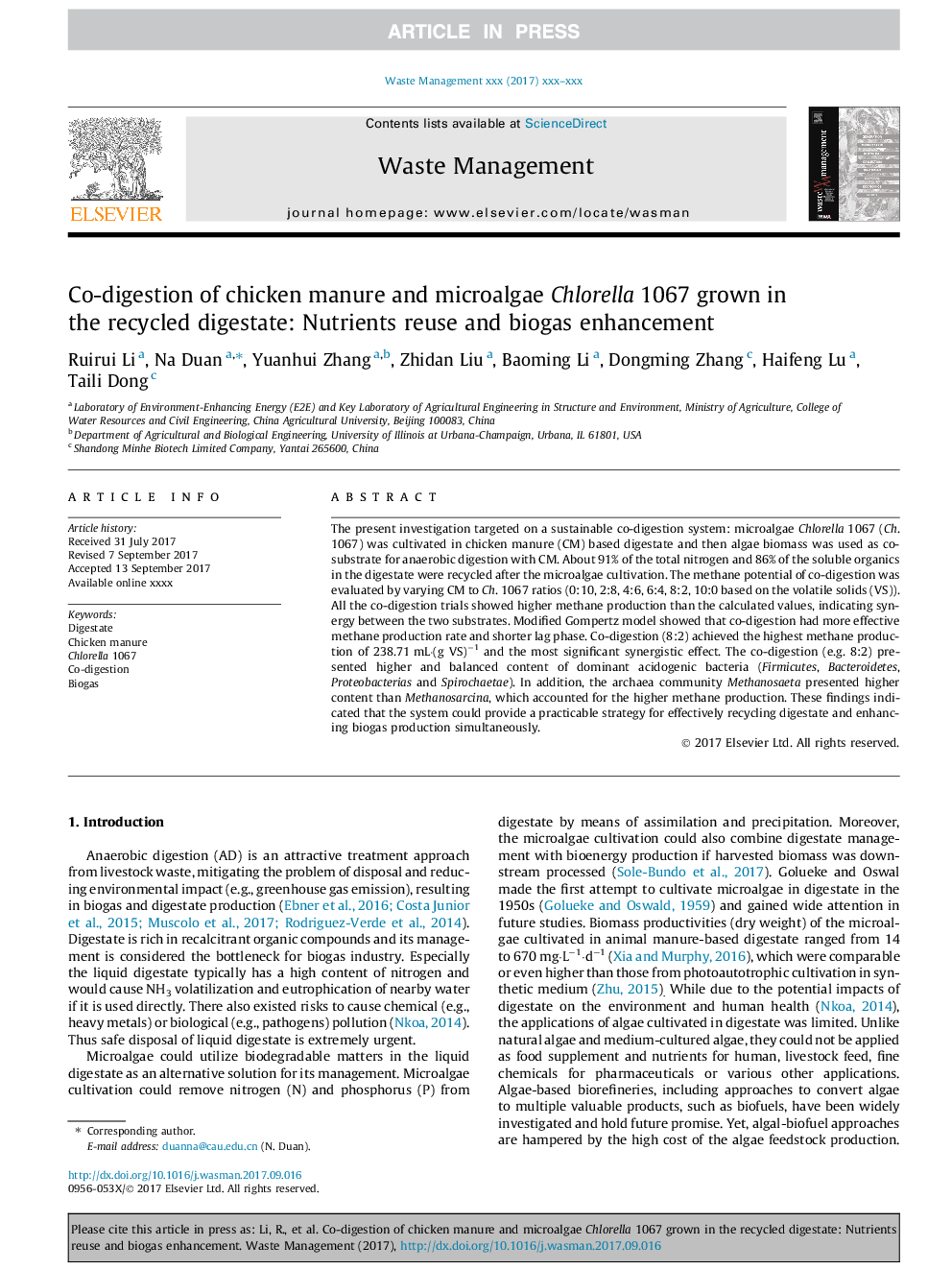| Article ID | Journal | Published Year | Pages | File Type |
|---|---|---|---|---|
| 8870419 | Waste Management | 2017 | 8 Pages |
Abstract
The present investigation targeted on a sustainable co-digestion system: microalgae Chlorella 1067 (Ch. 1067) was cultivated in chicken manure (CM) based digestate and then algae biomass was used as co-substrate for anaerobic digestion with CM. About 91% of the total nitrogen and 86% of the soluble organics in the digestate were recycled after the microalgae cultivation. The methane potential of co-digestion was evaluated by varying CM to Ch. 1067 ratios (0:10, 2:8, 4:6, 6:4, 8:2, 10:0 based on the volatile solids (VS)). All the co-digestion trials showed higher methane production than the calculated values, indicating synergy between the two substrates. Modified Gompertz model showed that co-digestion had more effective methane production rate and shorter lag phase. Co-digestion (8:2) achieved the highest methane production of 238.71Â mLâ
(g VS)â1 and the most significant synergistic effect. The co-digestion (e.g. 8:2) presented higher and balanced content of dominant acidogenic bacteria (Firmicutes, Bacteroidetes, Proteobacterias and Spirochaetae). In addition, the archaea community Methanosaeta presented higher content than Methanosarcina, which accounted for the higher methane production. These findings indicated that the system could provide a practicable strategy for effectively recycling digestate and enhancing biogas production simultaneously.
Related Topics
Physical Sciences and Engineering
Earth and Planetary Sciences
Geotechnical Engineering and Engineering Geology
Authors
Ruirui Li, Na Duan, Yuanhui Zhang, Zhidan Liu, Baoming Li, Dongming Zhang, Haifeng Lu, Taili Dong,
